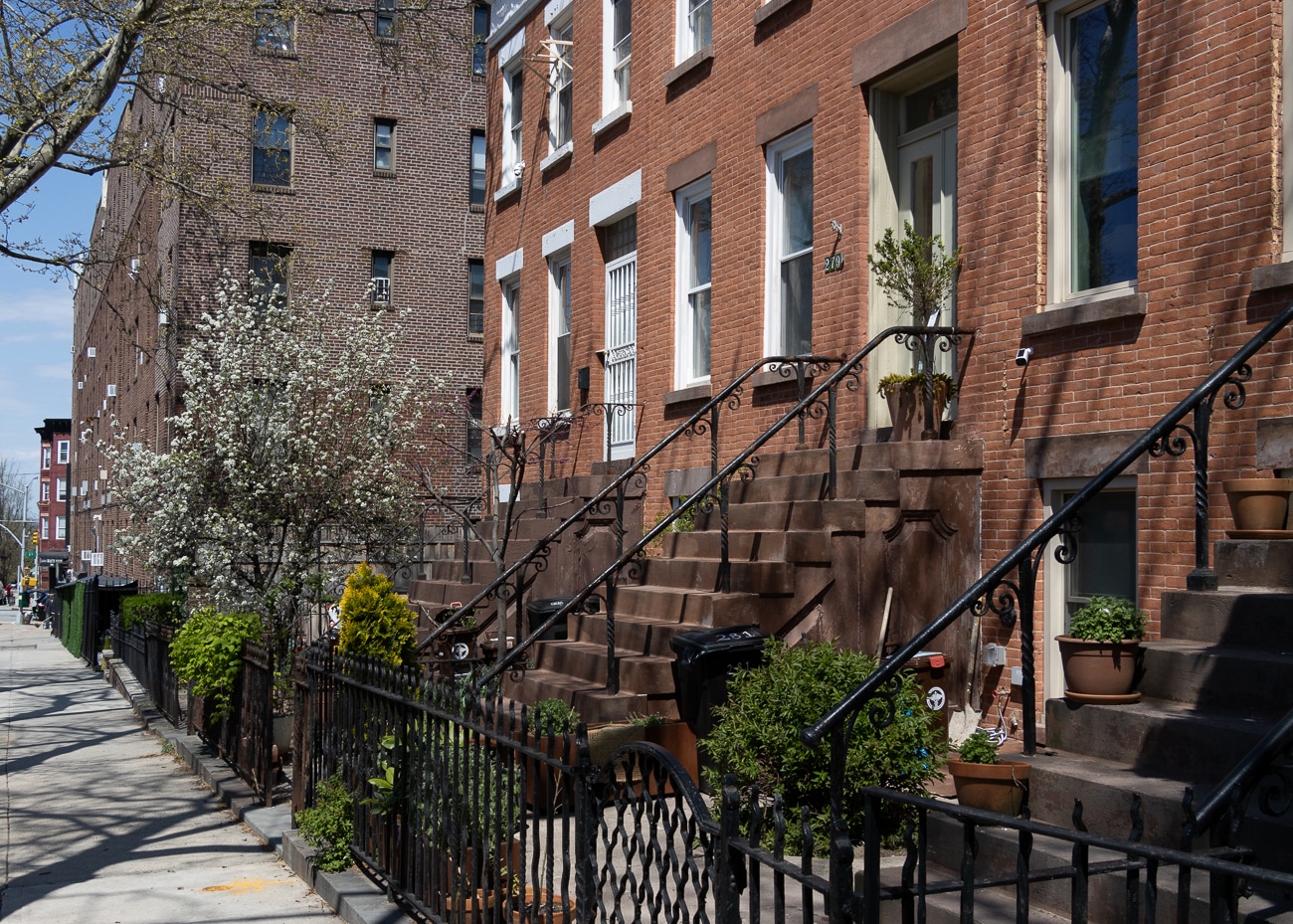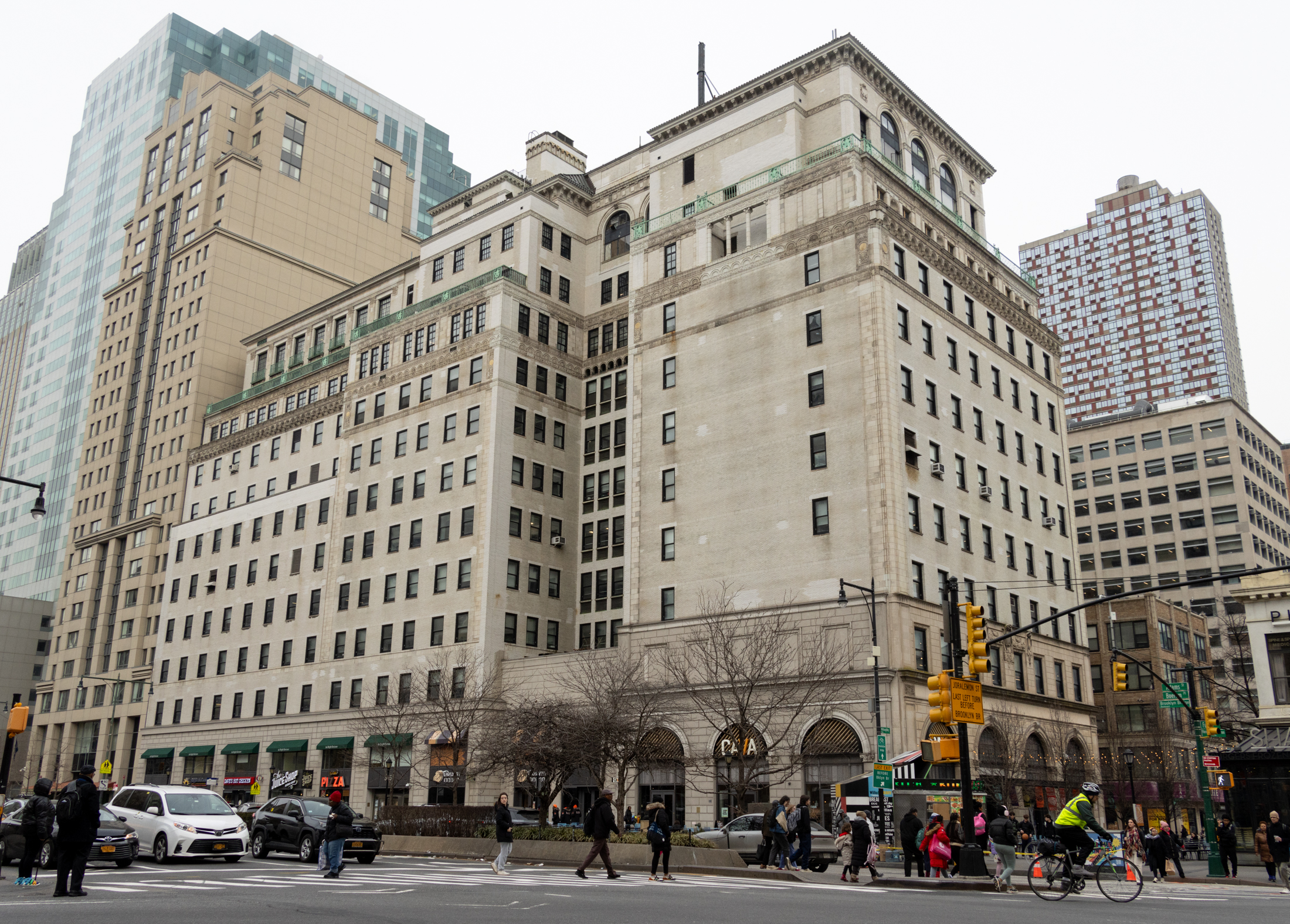Building of the Day: 50-54 Hudson Avenue, Old Brooklyn in Vinegar Hill
Brooklyn, one building at a time. Vinegar Hill is one of our oldest neighborhoods. It remains one of the best locations to see what working class life in pre–Civil War Brooklyn was like in the days of Walt Whitman. Name: Storefront with upper apartments Address: 50-54 Hudson Avenue Cross Streets: Plymouth and Water Streets Neighborhood:…
Brooklyn, one building at a time.
Vinegar Hill is one of our oldest neighborhoods. It remains one of the best locations to see what working class life in pre–Civil War Brooklyn was like in the days of Walt Whitman.
Name: Storefront with upper apartments
Address: 50-54 Hudson Avenue
Cross Streets: Plymouth and Water Streets
Neighborhood: Vinegar Hill
Year Built: 1828-1831
Architectural Style: Greek Revival
Architect: Unknown
Landmarked: Yes, part of Vinegar Hill Historic District (1997)
A store and more
Like most of the older buildings in Vinegar Hill, these three-story brick buildings have two floors of apartments over a storefront. They were all built in a simple Greek Revival style, with stone lintels and sills on the upper windows, and simple cornices. The names of the builders are lost to history.
These buildings have stood for almost 190 years in a city that changes rapidly, so it’s no wonder the storefronts are in varying degrees of original authenticity. 50 and 52 Hudson Avenue’s storefronts were last altered sometime after 1977.
A time capsule
As Brooklyn developed as a town along the East River waterfront, the area between today’s Navy Yard and the Brooklyn Bridge became one of the fastest-growing urban neighborhoods in the young city.
The land was owned primarily by two families, the Jacksons and the Sands. Comfort and Joshua Sands were large landowners, merchants and real-estate speculators.
John Jackson was a successful shipbuilder. His shipyard was at the base of Hudson Avenue, and he used some of his land to build housing for his workers. He owned the land that this row of houses was built on.
Jackson was also the landowner who sold the United States government the land for the Navy Yard. He sold the initial 40 acres in 1801, then was shrewdly contracted to build Naval housing in the area.
Jackson gave this neighborhood the name of Vinegar Hill. The name was chosen to commemorate a pivotal battle between the British and Irish in 1798 in County Wexford, Ireland. For much of the neighborhood’s history, this area was also known as “Irishtown.”
This was a working-class area. The shops in many of the buildings were occupied by grocers, butchers, produce sellers, and mercantile and supply trades relating to the Navy Yard and the docks. Most of the people living in the houses worked for one or the other.
Jackson built the houses on both sides of this block of Hudson, between Plymouth and Water streets, somewhere between 1828 and 1831. The buildings start to appear in the city directories in 1831.
The corner building, 50 Hudson Avenue, was occupied in its early years by a ship’s carpenter and several laborers. The storefront belonged to a butcher before the Civil War and a grocer in the 1880s.
Census reports show that a whopping 39 people in 10 households lived here in 1880, including the couple that owned the building.
An extension was built in 1911. It opens out onto Plymouth Street. It was turned into a garage in 1930.
52 Hudson Avenue, the middle building, also appears in the 1831 directory. At the time, residents included a paver and several laborers. Cornelia and Maria Jackson, heirs of John Jackson, sold all three buildings in 1840 to a Valentine G. Hall.
Between 1858 and 1871, the building was owned by tailor Abraham Cowen. He lived here and had his shop below. A later owner had a tobacco shop here. In 1915, a one-story extension was built in the back for provisioner Ferdinand Rohde, specifically for the purpose of smoking sausages.
54 Hudson Avenue had a similar history. While not entirely original, it has the most original storefront façade in the group.
It was a grocery when it first opened. Over the years, many men who were employed as local laborers lived here with their families. The 1880 census showed 13 people in five households in this small house. Space and notions of privacy were very different for a great many people during the 19th century.
The construction of the Manhattan Bridge and its roads, followed by the Brooklyn Queens Expressway, permanently altered the Vinegar Hill neighborhood, destroying most of it. Only a few residential and mixed commercial/residential streets remain.
The remains of the early 19th century peek in and out of what is now primarily a commercial area. The power plant, the warehouses, housing projects and new luxury housing make these remaining landmarked blocks even more special — a peek down a cobblestoned time tunnel that leads to Old Brooklyn.
Top and bottom photos – Google Maps. All others – Scott Bintner for PropertyShark.














What's Your Take? Leave a Comment